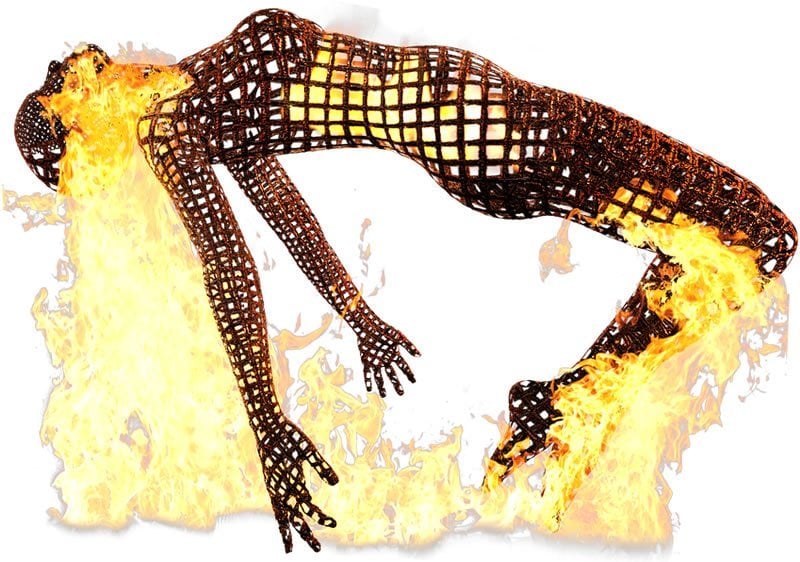Summary: Researchers have identified a positive association between persistent lower back pain and headache disorders. The study reveals those with persistent back pain or persistent headache disorders are twice as likely to suffer from both disorders at the same time.
Source: University of Warwick
People with persistent back pain or persistent headaches are twice as likely to suffer from both disorders, a new study from the University of Warwick has revealed.
The results, published in the Journal of Headache and Pain, suggest an association between the two types of pain that could point to a shared treatment for both.
The researchers from Warwick Medical School who are funded by the National Institute for Health Research (NIHR) led a systematic review of fourteen studies with a total of 460,195 participants that attempt to quantify the association between persistent headaches and persistent low back pain. They found an association between having persistent low back pain and having persistent (chronic) headaches, with patients experiencing one typically being twice as likely to experience the other compared to people without either headaches or back pain. The association is also stronger for people affected by migraine.
The researchers focused on people with chronic headache disorders, those who will have had headaches on most days for at least three months, and people with persistent low back pain that experience that pain day after day. These are two very common disorders that are leading causes of disability worldwide.
Around one in five people have persistent low back pain and one in 30 have chronic headaches. The researchers estimate that just over one in 100 people (or well over half a million people) in the UK have both.
Professor Martin Underwood, from Warwick Medical School, said: “In most of the studies we found that the odds were about double — either way, you’re about twice as likely to have headaches or chronic low back pain in the presence of the other. Which is very interesting because typically these have been looked as separate disorders and then managed by different people. But this makes you think that there might be, at least for some people, some commonality in what is causing the problem.

“There may be something in the relationship between how people react to the pain, making some people more sensitive to both the physical causes of the headache, particularly migraine, and the physical causes in the back, and how the body reacts to that and how you become disabled by it. There may also be more fundamental ways in how the brain interprets pain signals, so the same amount of input into the brain may be felt differently by different people.”
“It suggests the possibility of an underpinning biological relationship, at least in some people with headache and back pain, that could also be a target for treatment.”
Currently, there are specific drug treatments for patients with persistent migraine. For back pain, treatment focuses on exercise and manual therapy, but can also include cognitive behavioural approaches and psychological support approaches for people who are very disabled with back pain. The researchers suggest that those types of behavioural support systems may also help people living with chronic headaches.
Professor Underwood added: “A joint approach would be appropriate because there are specific treatments for headaches and people with migraine. Many of the ways we approach chronic musculoskeletal pain, particularly back pain, are with supportive management by helping people to live better with their pain.
“We could look at developing support and advice programmes that are appropriate for this population. And being aware of this relationship has the potential to change how we think about managing these people in the NHS on an everyday basis. There is a need for doctors and other healthcare professionals to think that when treating one issue to ask about the other and tailor the treatment accordingly. For future research, there’s probably work that needs to be done to understand what the underlying mechanisms behind this relationship are.”
Source:
University of Warwick
Media Contacts:
Peter Thorley – University of Warwick
Image Source:
The image is in the public domain.
Original Research: Open access
“The association between headache and low back pain: a systematic review”. Arani Vivekanantham, Claire Edwin, Tamar Pincus, Manjit Matharu, Helen Parsons, Martin Underwood.
Journal of Headache and Pain doi:10.1186/s10194-019-1031-y.
Abstract
The association between headache and low back pain: a systematic review
Background
To systematically review studies quantifying the association between primary chronic headaches and persistent low back pain (LBP).
Main text
We searched five electronic databases. We included case-control, cross-sectional and cohort studies that included a headache and back pain free group, reporting on any association between persistent LBP and primary headache disorders. Methodological quality was assessed using Newcastle-Ottawa Scale. Our primary outcome was the association between primary headache disorders and persistent LBP. Our secondary outcomes were any associations between severity of LBP and severity of headache, and the relationship between specific headache sub-types classified as per International Classification of Headache Disorders (ICHD) criteria and persistent LBP.
We included 14 studies. The sizes of the studies ranged from 88 participants to a large international study with 404, 206 participants. Odds ratios for the association were between 1.55 (95% confidence interval (CI) 1.13–2.11) and 8.00 (95% CI 5.3–12.1). Study heterogeneity meant statistical pooling was not possible. Only two studies presented data investigating persistent LBP and chronic headache disorders in accordance with ICDH criteria.
Conclusions
We identified a positive association between persistent LBP and primary headache disorders. The quality of the review findings is limited by diversity of populations, study designs and uncertainly about headache and LBP definitions.
Trial registration
PROSPERO 2018 CRD42018086557.






